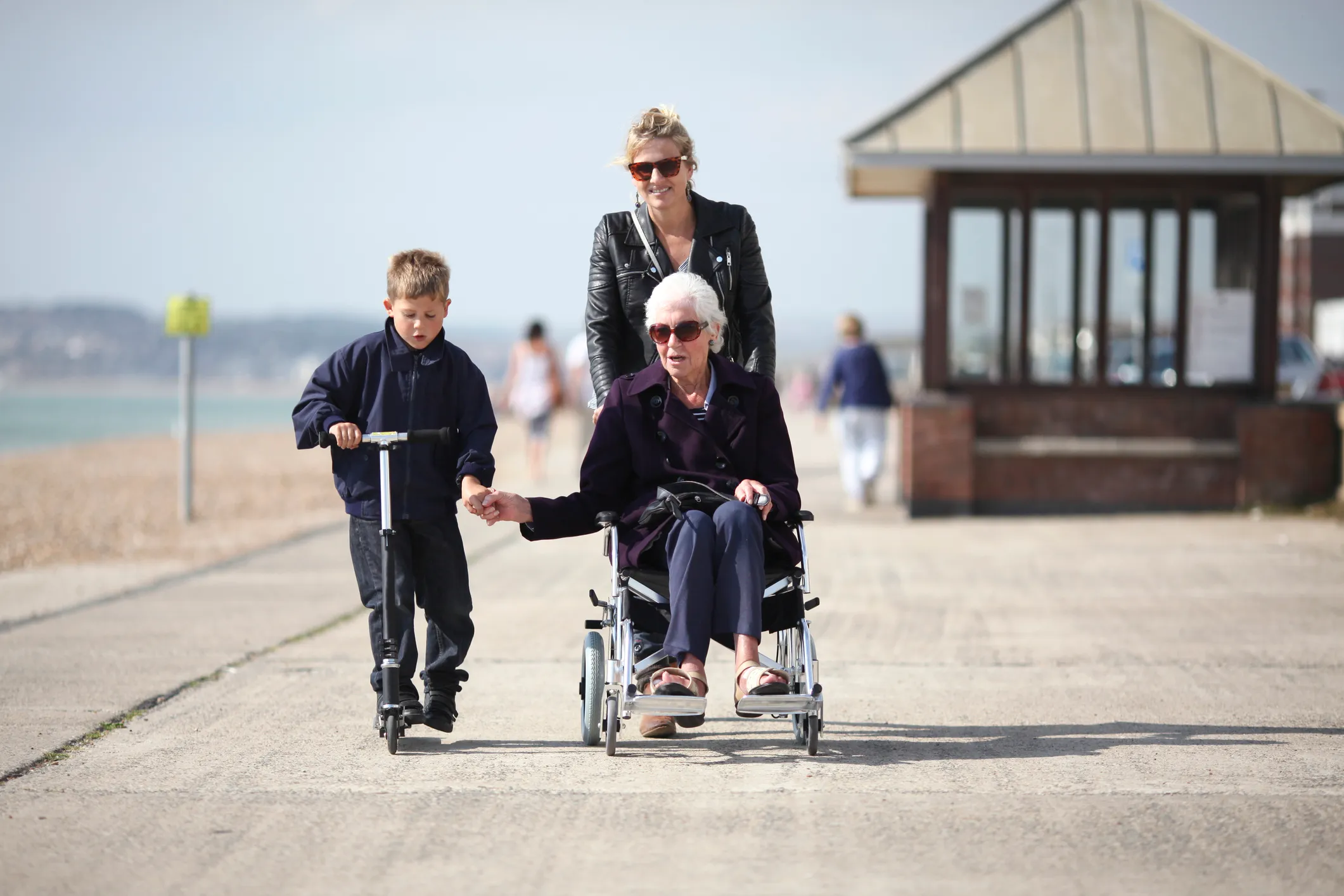The small stuff, like getting up and moving, becomes increasingly challenging as you age. And many seniors find themselves struggling to stay mobile as their muscles grow weaker and aches and pains pose new problems.
But you don’t have to give up your mobility or your independence – you just need an assistive device. No matter your mobility needs, there’s an assistive device available that can help offer support. Consider the following top options for seniors of all mobility levels.
Cane
A cane is one of the oldest assistive devices available – and it’s been a popular choice for seniors or anyone who struggles with mobility for decades. Canes, which can also be called walking canes, allow you to stabilize your balance by putting your weight onto a single, sturdy point.
Using a cane as an assistive device gives you increased balance and stability. Relying on a cane while walking can reduce your risk of having a serious fall. A cane lessens the amount of weight you’re putting on your lower body, which makes this an excellent assistive device for seniors who have arthritis, lower-body joint pain, or who are recovering from surgery and having difficulty walking.
And canes are an affordable solution. Without health insurance, the average cane costs between $15 and $20. You can choose to customize your cane for your needs. While single-point canes are a very popular choice, three- and four-point canes are also available and are a great option for those who need a wider base and more support. Foldable canes are also available. A more specialized cane can cost between $15 and $40.
Walker
Walkers are popular assistive devices for seniors, especially those who need extra support. You can grasp a walker and lean on it for support, and its stable, four-legged bottom allows you to move with greater ease. They don’t need to be lifted or picked up, making it a great option for anyone who struggles with upper body movements. And walkers alleviate the weight walking places on your lower body, helping you improve your posture.
There are three common kinds of walkers: no wheel, two-wheel, and four-wheel. All styles are incredibly supportive. A walker can support as much as half of your body weight when used correctly. No matter which style of walker you choose, this is an assistive device that’s been found to prevent falls and stabilize those with severe balance issues or lower-body weakness.
If a walker is the best choice for your mobility needs, you’ll find that the price can vary widely. Standard walkers, which have no wheels, can start at $35 and be as expensive as $100. Wheeled walkers typically start at $50 and can go up to $160.
Wheelchair
While a wheelchair might seem like a last resort, it can actually be a huge help for seniors who are struggling to get around easily. A wheelchair completely eliminates instability risks and balance issues, putting you in a comfortably seated position. And when you rely on a wheelchair, you don’t have to give up control or independence.
Wheelchairs are designed with seniors and mobility in mind. They’re often lightweight, foldable, and available in so many different styles, shapes, and functions. You can choose a manual wheelchair if you’d like to wheel yourself around – but make sure your upper body strength is enough to handle the job. Heavy-duty wheelchairs can handle any obstacles, and electric wheelchairs allow you to control your direction, speed, and mobility.
When it comes to pricing, wheelchairs can vary widely, especially if you have a custom wheelchair. A standard manual wheelchair’s price can start at $50. A sturdier, everyday-use wheelchair can cost between $1,000 and $2,000. And power or electric wheelchairs can see prices well into the thousands.
Scooter
Not quite ready for a wheelchair but find that a cane or walker isn’t your speed? An excellent assistive device for you might be a scooter. Also called mobility scooters, a scooter is a device that helps seniors stay independent and active, especially if you’re finding it tough to walk or get through activities that require a lot of walking.
A mobility scooter is the perfect choice for seniors of all walks of life. If you’ve experienced a fall, an injury, or a stroke, a scooter can help you move throughout your home and activities outside your home with no risk. You’ll also prevent falls by using a scooter, as you’ll remain comfortably seated and put no weight or pressure on your lower body. And if you’re seated, you don’t have to worry about your balance or your energy level.
The approximate cost of a mobility scooter ranges from $600 and $2,000. Before you decide on a scooter, make sure to consider different features and add-ons that can increase the cost. And check with your health insurance company to see if any portion of your scooter might be covered.
